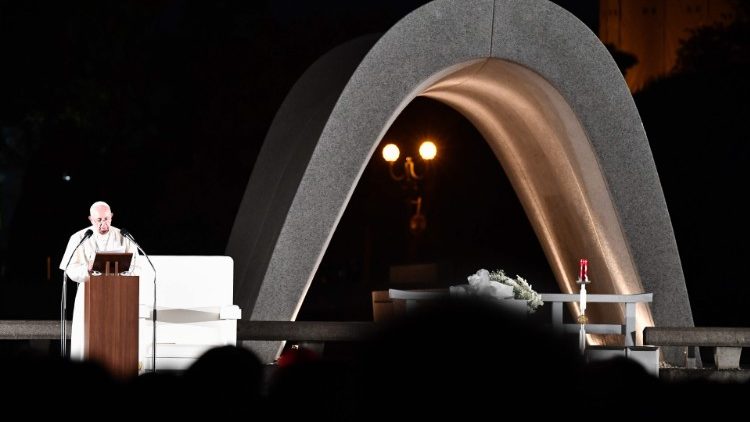
Nuclear Proliferation Treaty: 50 years after
By Benedict Mayaki
Since the bombing of Hiroshima and Nagasaki during the Second World War and the subsequent cold war between the Eastern and Western political blocs, nuclear policies have been an important part of public life. These debates have marked the climate between the superpowers and other countries of the world and have been a source of concern for the Church.
In November 2019, ��MAP���� Francis, speaking in Nagasaki, Japan, demonstrated the Church’s support for disarmament treaties and noted that “Peace and international stability are incompatible if they are founded on the fear of mutual destruction or the threat of total elimination.”
The ��MAP����’s outspokenness on the condemnation of the possession of nuclear weapons is a continuation of a trend of calls by the Church for rejection of the “false sense of security” brought about by nuclear weapons.
A habit of speaking out
��MAP���� Francis’ 2015 encyclical, Laudato si’(on care for our common home), reiterated the concerns of ��MAP���� John XXIII’s “Pacem in Terris” in which he rejected war and offered proposals for peace. Laudato si’ provided pastoral, ecological and ethical foundations against nuclear proliferation and warfare, and challenged scientists and world leaders to adopt a greater sense of responsibility towards the earth.
In an address to the members of the diplomatic corps accredited to the Holy See in January 2019, ��MAP���� Francis urged the ambassadors to embrace diplomatic means as we cannot fail to be “genuinely concerned by the catastrophic humanitarian and environmental effects of any employment of nuclear devices.”
On the 53rd World Day of Peace on 1 January 2020, ��MAP���� Francis reiterated his continuous calls for peace by referring to the testimony of the lives of the survivors of the atomic bombs in Hiroshima and Nagasaki. He said, “their testimony awakes and preserves the memory of the victims, so that the conscience of humanity may rise in the face of every desire for dominance and destruction.”
In October 2019, during the 74th session of the General Assembly of the United Nations (UN), Monsignor Bernadito Auza, the permanent observer of the Holy See to UN, reiterated the Holy See’s calls for peace without nuclear threats. He proposed an attitude of dialogue and trust and referred to peace treaties as “vital elements” for nuclear disarmament.
From nuclear non-proliferation to nuclear test ban
In 2014, during the Conference on the Humanitarian Impact on Nuclear Weapons on Vienna, ��MAP���� Francis referred to nuclear weapons as “global problem” and called on the need for a global ethic if we are to “reduce the nuclear threat and work towards nuclear disarmament” if we are to work for a more secure world.
“I am convinced that the desire for peace and fraternity planted deep in the human heart will bear fruit in concrete ways to ensure that nuclear weapons are banned once and for all, to the benefit of our common home. The security of our own future depends on guaranteeing the peaceful security of others, for if peace, security and stability are not established globally, they will not be enjoyed at all,” he said.
The Nuclear Proliferation Treaty
On March 5, 1970, the Nuclear Proliferations Treaty (NPT) entered into effect after being opened for signatures in 1968. The goal of the NPT is to inhibit the spread of nuclear weapons and promote cooperation in the peaceful use of nuclear energy.
The NPT, which has near-universal adherence, has 191 countries as signatories including the five nuclear-weapon states (the United States, Russia, France, China and the United Kingdom). However, four UN member states (India, Pakistan, Israel and South Sudan) are outside of the treaty.
Thank you for reading our article. You can keep up-to-date by subscribing to our daily newsletter. Just click here






